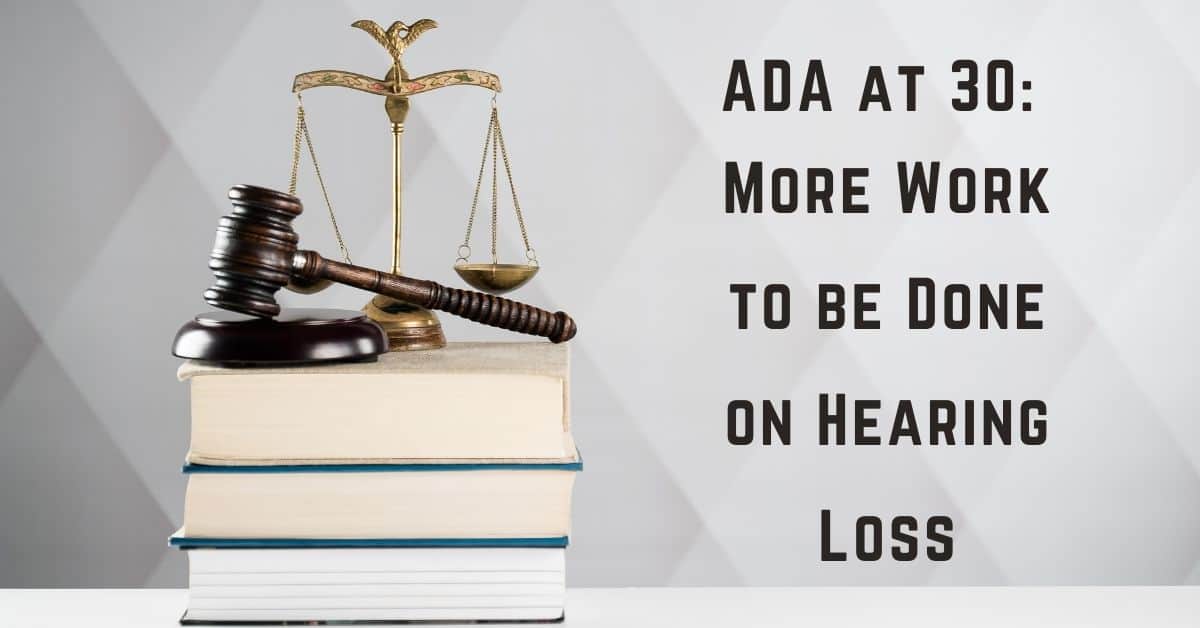
- Tips for Veterans Dealing With Hearing Loss - April 25, 2024
- How to Properly Clean Your Hearing Aids - April 15, 2024
- How to Handle Ear Infections With Hearing Aids - April 5, 2024
The Americans with Disabilities Act (ADA) has protected the rights of people with disabilities for three decades! As of July 26, 2020 the ADA has officially turned 30 and with three decades of creating access for people with disabilities in the workplace, for government programs, on transportation, in public spaces and more the programs have been indispensable.
However, as we look back on the valuable work the ADA has done, we must examine how much more can be done, especially as technology and awareness continue to expand.
Evolving the ADA in a Changing World
It is important to remember, while many disabilities are visible to everyone, such as using a wheelchair or crutches, there are a multitude of disabilities that no one can see that are just as valid.
Hearing loss is an invisible disability that affects many aspects of the lives of those affected. Hearing loss not only hinders communication but increases the risk of falls accidents and hospitalizations.
Despite all the celebration and retrospectives around the ADA’s 30 years, little was mentioned about hearing loss. Much work is still required to raise awareness and accommodate the 48 million people in the US around hearing loss.
Increased Awareness about Hearing Loss
Hearing loss is commonly associated with the elderly, affecting one in three over 65 and half of those 75 and older. However, hearing loss can affect people of all ages due to exposure to noise, head trauma, certain medications and chronic infection.
Raising awareness means that people can be aware of the risks of hearing loss and avoid them. However, if someone has already developed this condition it very often can not be reversed. This is why it is important to create accommodations for the millions of people living with hearing loss, so they can continue to interface and adapt in a society which prioritizes communication.
Existing Accommodations for Hearing Loss
Accommodations provide resources needed to succeed in areas that people with healthy hearing have no trouble accessing. This includes in meetings at work, on the screen, in public settings and more. It is important to remember that everyone’s hearing loss is slightly different and must be handled individually. Below are a few methods for accommodating those who are hard of hearing, creating a wide range of options for people depending on what works best for them.
Closed captioning creates text on screens for those who have trouble hearing video while real time captioning can help people in virtual and in-person meetings. Many with hearing loss can benefit from text phones which type out conversation or just old fashion pen and paper to help convey information. For emergencies visual emergency notifications help those with hearing disabilities react safely in an emergency.
Increasing ADA Support for the Hard of Hearing
Despite all the strides in technology and accommodations created for people with hearing disabilities in the past 30 years, there is so much more that must be accomplished.
While there are specific plans in place by the ADA for public spaces, workplaces and schools there is much to consider as technology continues to advance and become central in our lives. With the rampant spread of Covid-19 the use of video conferencing has become essential for school, work and social events.
However, many of these video conferencing apps such as Zoom do not create real time captioning making these meetings inaccessible for the hearing impaired. Other platforms such as Skype and Google Meet do have this feature making it a more accessible choice.
The Importance of Hearing Aids
One of the most important things you can do to help make the world be a more accessible place is to have your hearing tested regularly. Hearing loss affects people of all ages, so it is never too early to test your hearing early and identify if you have an issue, before it can progress into a more serious problem.
The most common treatment for most hearing loss is hearing aids, which amplify sounds you struggle with and send it to your ears to be processed by your brain. Now hearing aids have special features and accommodations which make it easier for you to navigate the world wherever you go. Bluetooth technology allows you to stream sound from your phone, computer, TV screen or virtual meeting directly into your ear, creating clear sound.
